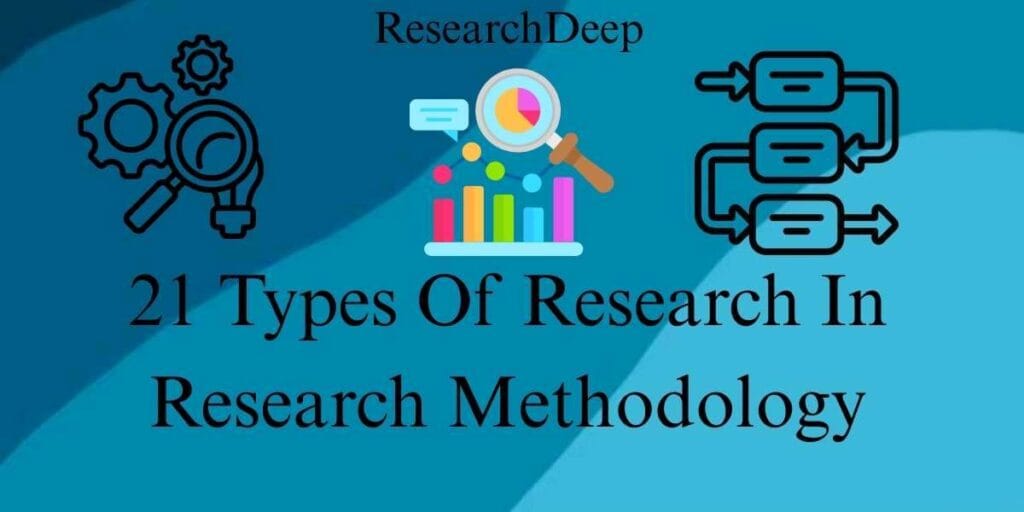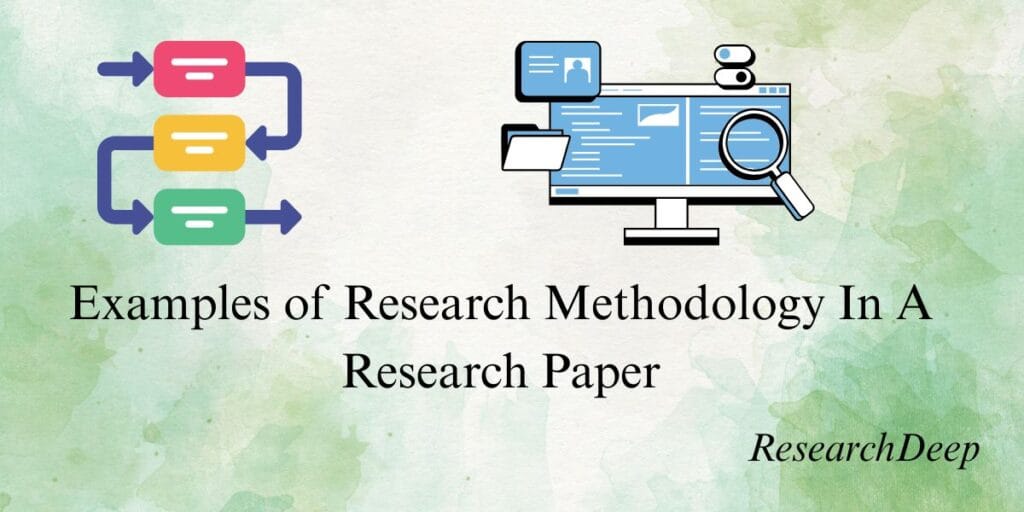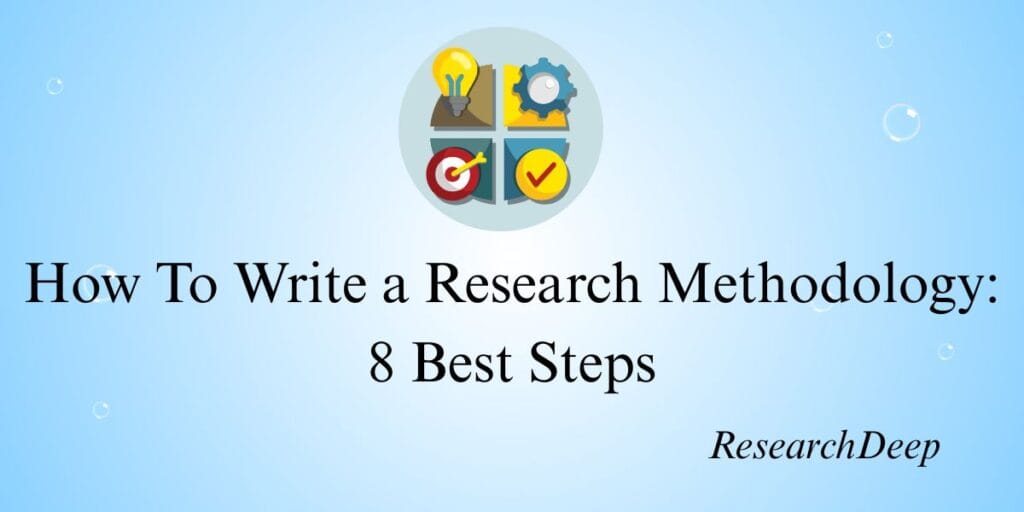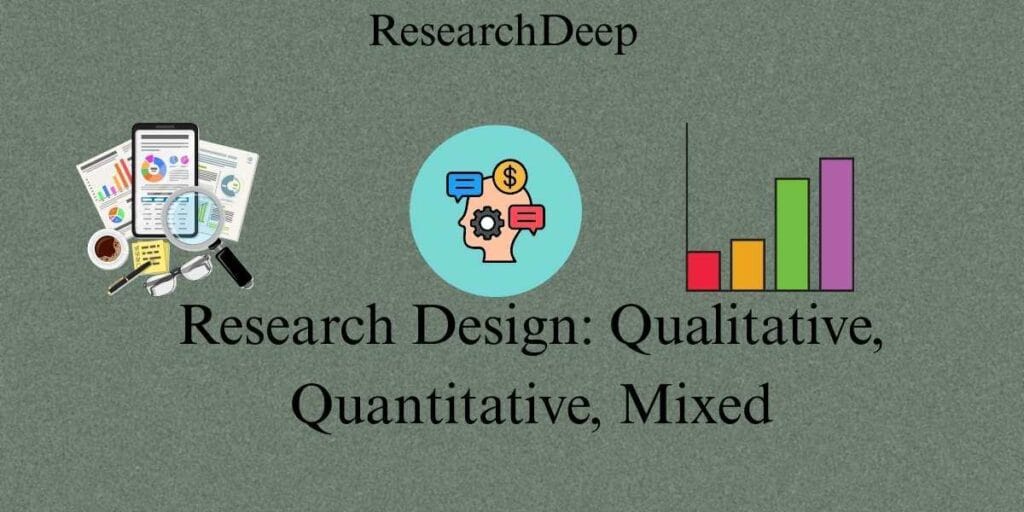Last updated on September 25th, 2025 at 04:56 am
Introduction
Types of research in research methodology form the foundation for every scientific inquiry, guiding scholars in selecting the most appropriate approach to answer their research questions.
A 2022 Elsevier study found that over 78% peer-reviewed articles explicitly reference their research type in the methodology section, underscoring its critical role in academic credibility.
From fundamental research designs aimed at expanding theoretical knowledge to applied research solving real-world problems, each type shapes the research process, the types of data collected, and the interpretation of results.
In the sections below, we’ll explore 21 distinct types of research, first through a concise tabular overview for quick reference, and then via a classification tree that visually organizes them into logical categories.
This dual approach makes it easier to grasp how each type relates to the others and where it fits within the broader research landscape.
Table of Contents
Types Of Research In Research Methodology
Table of the 21 Types of Research
| No. | Type | Description |
|---|---|---|
| 1 | Fundamental (Pure) | Seeks to expand knowledge without practical application in mind. |
| 2 | Applied | Focuses on solving practical, real-world problems. |
| 3 | Action Research | Conducted to solve immediate issues and improve practices. |
| 4 | Qualitative | Explores phenomena in-depth using non-numerical data. |
| 5 | Quantitative | Relies on numerical data and statistical analysis. |
| 6 | Mixed Methods | Combines qualitative and quantitative approaches. |
| 7 | Descriptive | Provides an accurate portrayal of characteristics of a phenomenon. |
| 8 | Correlational | Examines relationships between variables without manipulation. |
| 9 | Experimental | Involves controlled testing to determine cause-effect relationships. |
| 10 | Case Studies | In-depth analysis of a specific instance or event. |
| 11 | Longitudinal | Studies conducted over a long period to track changes. |
| 12 | Cross-sectional | Snapshot study at a single point in time. |
| 13 | Exploratory | Preliminary research to clarify and define problems. |
| 14 | Explanatory | Seeks to explain why phenomena occur. |
| 15 | Comparative | Compares two or more entities to identify similarities and differences. |
| 16 | Evaluation | Assesses the effectiveness of programs, policies, or products. |
| 17 | Developmental | Focuses on the design and improvement of processes or products. |
| 18 | Survey | Collects data from a sample to generalize to a larger population. |
| 19 | Historical | Studies past events to understand present and future implications. |
| 20 | Ethnographic | Studies cultures and communities in their natural setting. |
| 21 | Phenomenological | Examines lived experiences to understand their meaning. |
Classification Tree of the 21 Types of Research
Meaning, Applications, Examples, And Case Studies
1. Fundamental (Pure) Research
Meaning: Seeks to expand existing knowledge without immediate commercial or practical application.
Applications: Advancing theories, developing new concepts in fields like physics, chemistry, and sociology.
Example: Studying the behavior of subatomic particles without a specific use in mind.
Case Study: In the early 20th century, quantum mechanics was developed as pure research; decades later, it enabled semiconductors, lasers, and modern computing.
2. Applied Research
Meaning: Conducted to solve specific, practical problems.
Applications: Product development, policymaking, and improving processes.
Example: Developing drought-resistant crops for agriculture.
Case Study: The Green Revolution in India used applied plant genetics to improve crop yields, directly addressing food shortages.
3. Action Research
Meaning: Research conducted by practitioners to improve their practices in real time.
Applications: Education, healthcare, community development.
Example: A teacher testing a new teaching method in their classroom.
Case Study: A hospital team investigates why post-surgery infections are high and implements hygiene training, then measures the drop in infection rates.
4. Qualitative Research
Meaning: Explores human behavior, emotions, and experiences using non-numerical data.
Applications: Market research, anthropology, psychology.
Example: Qualitative research is used to conduct interviews to understand consumer preferences.
Case Study: An ethnographer spends six months in a rural village studying cultural rituals and community life.
5. Quantitative Research
Meaning: Collects and analyzes numerical data to identify patterns or test hypotheses.
Applications: Economics, epidemiology, engineering.
Example: Quantitative research measures the effectiveness of a drug using statistical trials.
Case Study: COVID-19 vaccine trials measured infection rates among vaccinated and placebo groups to prove efficacy.
6. Mixed Methods Research
Meaning: Combines qualitative and quantitative approaches for deeper insights.
Applications: Education evaluation, healthcare assessment.
Example: Surveying students (quantitative) and interviewing them (qualitative) to assess curriculum effectiveness.
Case Study: An NGO evaluates a literacy program by testing reading levels and also conducting focus groups to understand learning challenges.
7. Descriptive Research
Meaning: Describes characteristics of a phenomenon without investigating cause-and-effect relationships.
Applications: Demographic studies, market segmentation.
Example: Census surveys describing population distribution.
Case Study: A tourism board collects data on visitor demographics to plan targeted marketing.
8. Correlational Research
Meaning: Examines the relationship between two or more variables without manipulation.
Applications: Psychology, public health, and education.
Example: Studying the relationship between exercise frequency and mental health.
Case Study: Researchers find a positive correlation between higher education levels and life expectancy in OECD countries.
9. Experimental Research
Meaning: Uses controlled testing to establish cause-and-effect relationships.
Applications: Clinical trials, product testing.
Example: Testing two different fertilizer brands to see which improves the yield more.
Case Study: A pharmaceutical company tests a new heart medication against a placebo in double-blind trials.
10. Case Study Research
Meaning: In-depth investigation of a single case within its real-life context.
Applications: Business, law, education, medicine.
Example: Analyzing a successful startup’s growth strategy.
Case Study: Harvard Business School’s analysis of Apple’s innovation strategy post-2007 iPhone launch.
11. Longitudinal Research
Meaning: Studies the same subjects repeatedly over a long period.
Applications: Social sciences, epidemiology, developmental psychology.
Example: Tracking the same group of patients over 20 years to study aging effects.
Case Study: The Framingham Heart Study (since 1948) has shaped our understanding of cardiovascular health.
12. Cross-sectional Research
Meaning: Observes a population at a single point in time.
Applications: Public health surveys, market analysis.
Example: A survey on dietary habits was conducted in 2023 across all age groups.
Case Study: A UN survey measuring global internet usage rates in a single year.
13. Exploratory Research
Meaning: Conducted to clarify problems and generate ideas for future research.
Applications: New market entry, scientific innovation.
Example: Interviewing experts before launching a new product.
Case Study: Tesla’s early market research before introducing the Model S helped identify consumer needs in luxury EVs.
14. Explanatory Research
Meaning: Seeks to explain why phenomena occur and identify underlying causes.
Applications: Social sciences, medical research.
Example: Studying why specific teaching methods lead to better exam results.
Case Study: An education ministry investigates why rural schools outperform urban schools in literacy rates.
15. Comparative Research
Meaning: Compares two or more entities to identify similarities/differences.
Applications: Political science, sociology, economics.
Example: Comparing healthcare systems in the US and UK.
Case Study: OECD compares STEM education outcomes between Finland and South Korea.
16. Evaluation Research
Meaning: Assesses the effectiveness of programs, products, or policies.
Applications: Government programs, corporate training.
Example: Evaluating the impact of a vaccination campaign.
Case Study: WHO’s evaluation of the polio eradication campaign in India determined its long-term success.
17. Developmental Research
Meaning: Focuses on creating and improving products, processes, or programs.
Applications: Technology, education, and manufacturing.
Example: Developing a new app for mental health support.
Case Study: Google’s iterative development of Google Maps features using user feedback.
18. Survey Research
Meaning: Collects information from a sample to generalize to a larger population.
Applications: Market trends, political polling.
Example: Conducting a political opinion poll before elections.
Case Study: Pew Research Center surveys on global attitudes toward climate change.
19. Historical Research
Meaning: Studies past events to draw insights for the present/future.
Applications: History, policy studies, archaeology.
Example: Examining ancient irrigation systems to solve modern water crises.
Case Study: Historians’ analysis of the Spanish Flu informs modern pandemic preparedness.
20. Ethnographic Research
Meaning: Immersive study of cultures and communities.
Applications: Anthropology, market research.
Example: Living in an Amazonian tribe to document traditions.
Case Study: Margaret Mead’s studies in Samoa reshaped anthropological thinking about adolescence.
21. Phenomenological Research
Meaning: Focuses on lived experiences to uncover meaning.
Applications: Psychology, nursing, philosophy.
Example: Studying cancer survivors’ experiences with recovery.
Case Study: Research on post-traumatic growth in war veterans helps develop better counseling practices.
Benefits of Understanding Research Types
- Improved Study Design: Selecting the right type ensures your research answers the intended research question effectively.
- Efficient Resource Use: Avoids wasted time, funding, and effort.
- Stronger Academic Writing: Demonstrates methodological clarity in theses, dissertations, and peer-reviewed publications.
- Better Professional Decisions: Enables evidence-based strategies in business, healthcare, and policymaking.
Limitations and Challenges
- Overlaps Between Types: Some research methods and research designs share characteristics, making classification tricky.
- Resource Constraints: Certain research types require extensive time, funding, or technology.
- Ethical Issues: Particularly in experimental and ethnographic research.
Generalizability: Not all findings apply outside their original context
Tips for Selecting the Right Research Type
- Match the Method to the Problem: Clearly define your research question first.
- Consider Resources: Evaluate budget, time, and available tools.
- Account for Ethics: Secure necessary permissions and follow ethical guidelines.
- Blend When Needed: Mixed methods can offer deeper insights.
Decision Flow: Choosing the Right Type of Research
Additional Reading
For a deeper understanding of related concepts in research methodology, you may explore:
Definition of Quantitative Research by Authors: An in-depth knowledge of how leading scholarly authors have defined quantitative research differently, but concur on objectivity, measurement, and statistical accuracy.
Qualitative and Quantitative Research Differences: A clear breakdown of strengths, limitations, and when to use each approach.
What Is a Literature Review in Research Methodology?: Why it’s important and how to do it effectively.
What Is The First Step In The Research Process?: Clearly defines the foundational steps to shape the direction of the research study.
How to Make A Research Question: A straightforward research question not only focuses the researcher’s efforts but also helps in framing the scope of the research.
Why Methodology Is Important In Research: Understand how methodology helps to achieve research objectives and impact the quality of findings.
FAQs
Can I combine different research types in one project?
Yes. Mixed methods research intentionally blends quantitative and qualitative approaches to provide comprehensive insights.
What is the most commonly used research type in academia?
Survey research and descriptive research are among the most commonly used in social sciences due to their versatility and ease of data collection.
Which research type is best for innovation?
Exploratory research is often the starting point for innovation, but applied research is key to bringing innovative ideas to practical use.
Conclusion
Understanding the 21 types of research in research methodology is not just an academic exercise — it is the foundation for producing meaningful, reliable, and impactful work. Each type serves a distinct purpose, from the curiosity-driven scope of fundamental research to the efficient applications of action or applied research.
By exploring the classifications, applications, and examples in this guide, you now have a structured map for identifying the approach that best suits your project or study. Whether you’re a postgraduate student, a professional researcher, or a practitioner seeking evidence-based solutions, choosing the right research type ensures your findings are both credible and actionable.
If you’re ready to deepen your knowledge, the Additional Reading section above offers targeted resources to expand your understanding and sharpen your skills.
In research, clarity and purpose are your strongest allies — and with the correct methodology, your work can create lasting value for academia and society alike.
References
- Creswell, J. W. (2018). Research Design: Qualitative, Quantitative, and Mixed Methods Approaches. Sage Publications.
- Neuman, W. L. (2014). Social Research Methods: Qualitative and Quantitative Approaches. Pearson Education.
- Babbie, E. (2020). The Practice of Social Research. Cengage Learning.
- Bryman, A. (2016). Social Research Methods. Oxford University Press.



